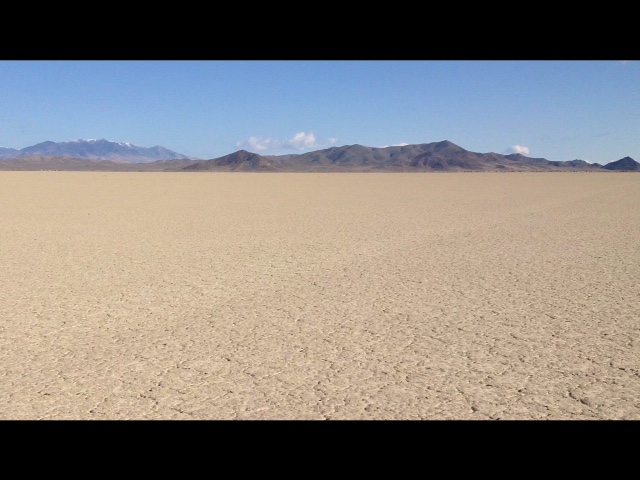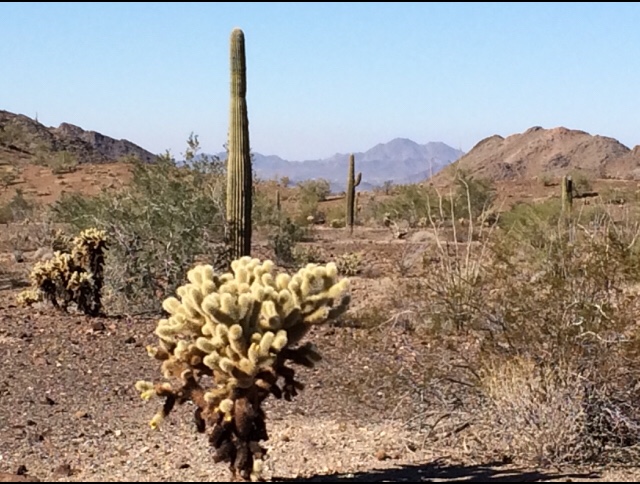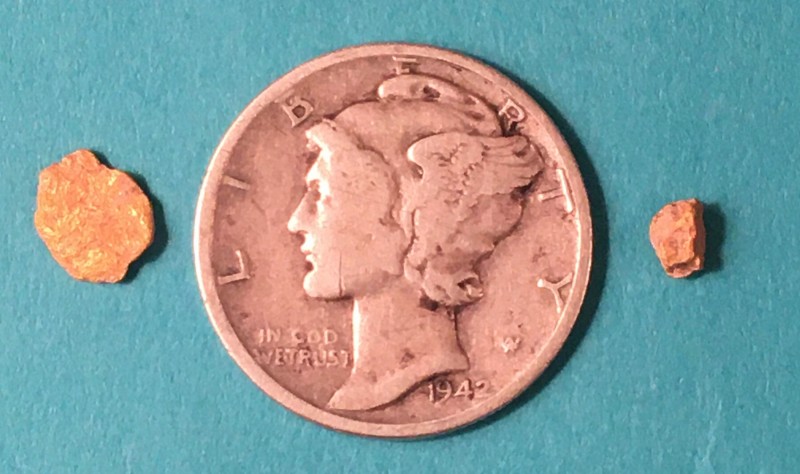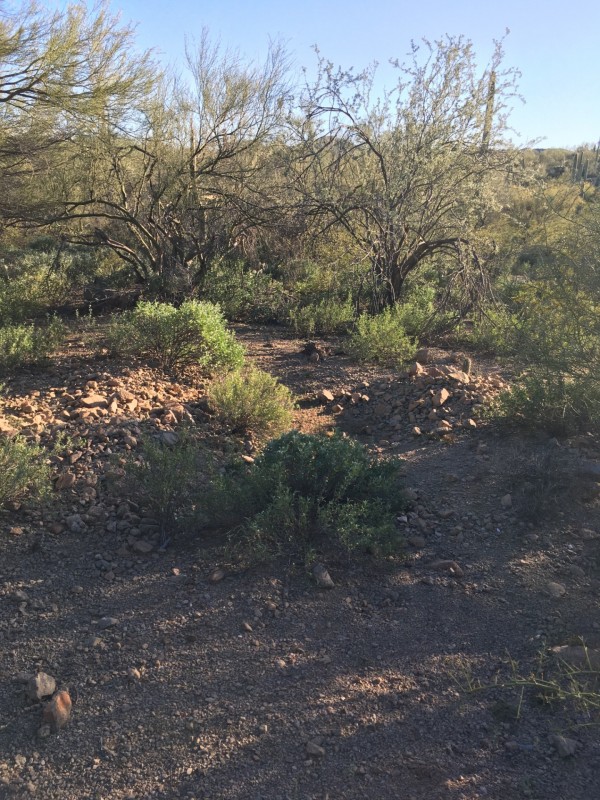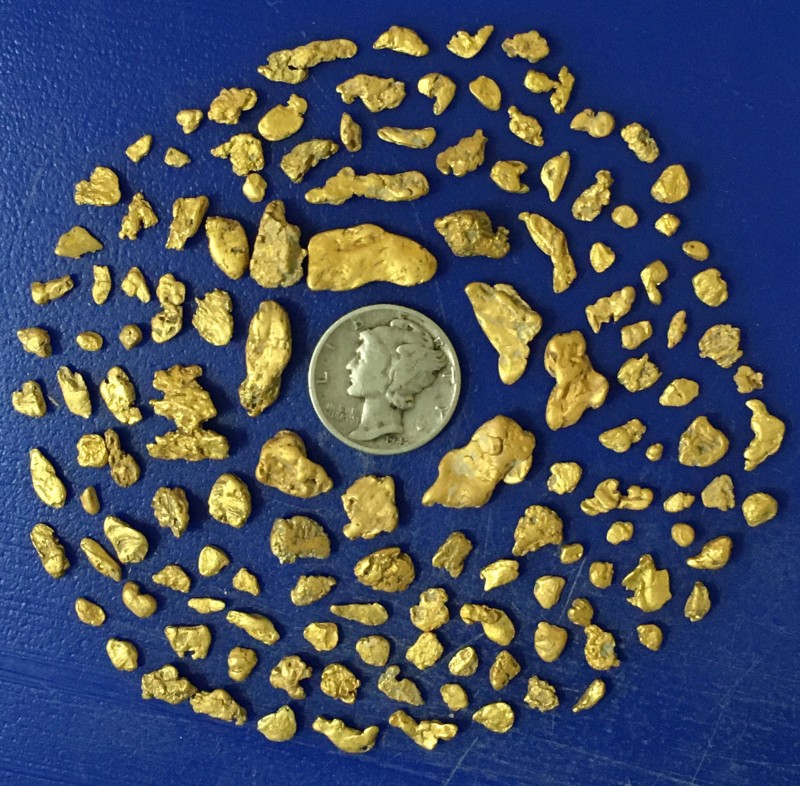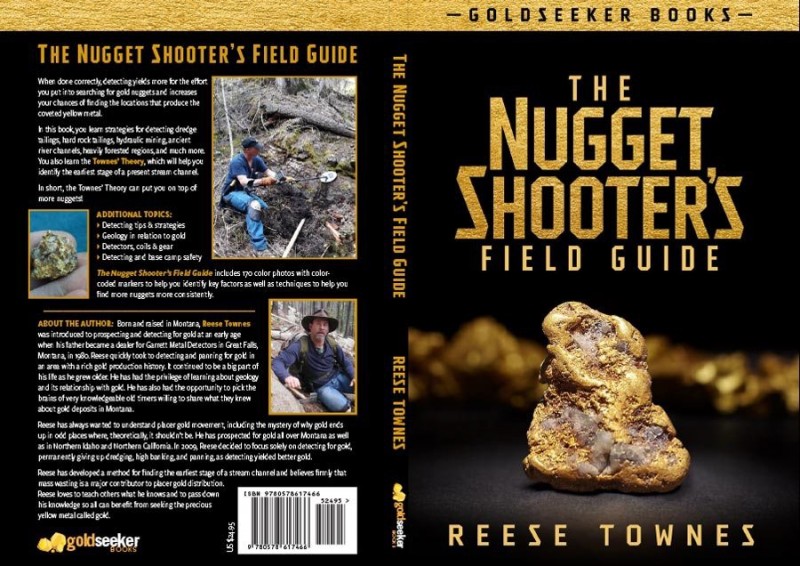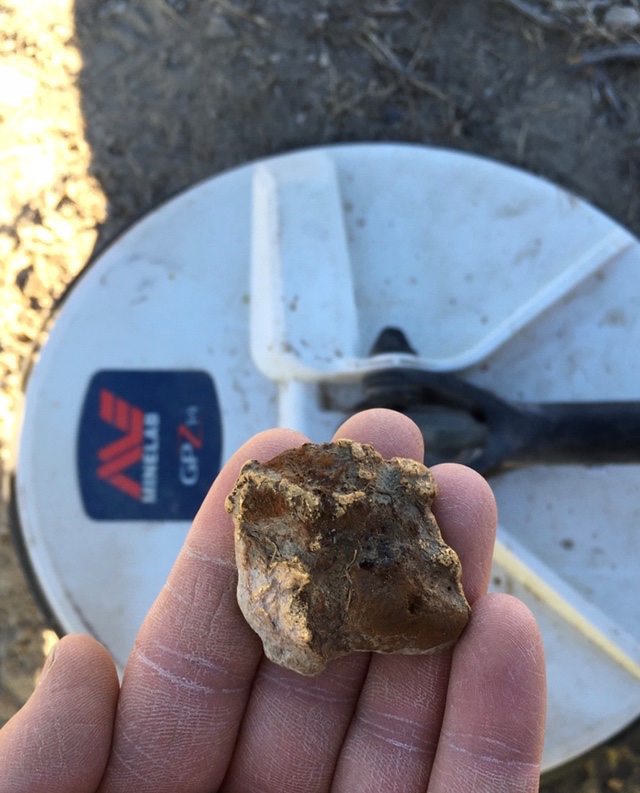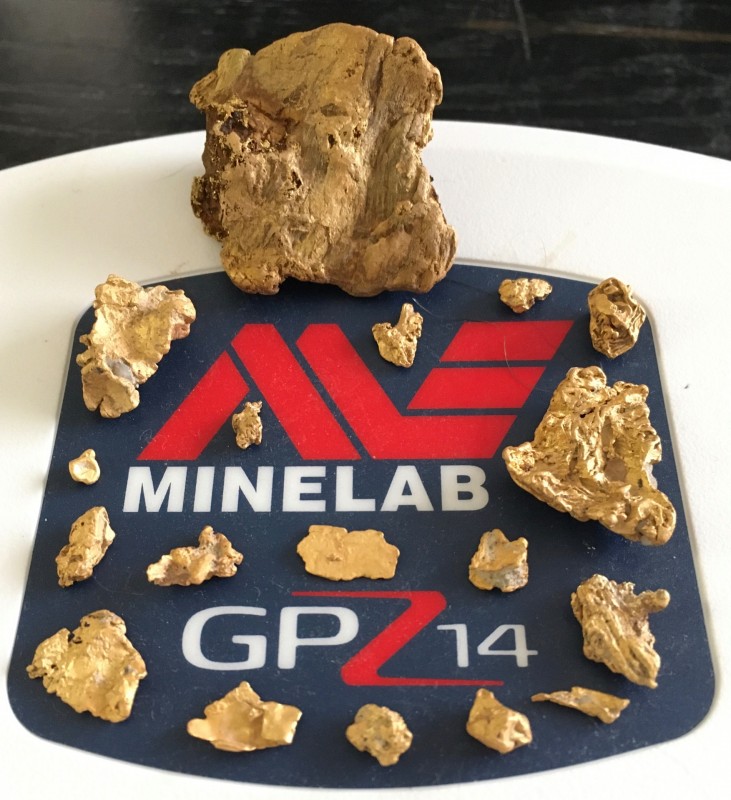-
Posts
1,185 -
Joined
-
Last visited
Content Type
Forums
Detector Prospector Home
Detector Database
Downloads
Everything posted by Lunk
-
While that would be awesome, the only means of measuring in-place density electronically is through the use of nuclear densitometry. Unfortunately, this method employs a radioactive gamma source, which I'm pretty sure the NRC wouldn't allow into the public’s hands, for obvious health and safety as well as national security reasons. If a new and harmless method of measuring the density of buried objects were invented, it would have far reaching applications beyond just metal detecting, so lets hope the engineers can make it happen; otherwise, target density ID is just a pipe dream.
-
Great finds JP, thanks for sharing and good to see more posts from you on this thread.
-
Fabulous finds! It was great hunting gold with you and the guys as always, Gerry.
-
Leprechaun toothpicks.
-
VL, once you get out in the goldfields and start swinging your grandfather's Nox, I'm sure he'll guide you to your share of gold, and you’ll become an old pro in no time. And it is a nice looking dime.🙂
-
I always look forward to the winter months when I can freely swing the mighty Zed in the vast stretches of the desert southwest, uninhibited by the dense vegetation I typically have to deal with in the forested regions of Idaho. Searching new areas for a nugget patch is never easy, and long, fruitless days can really test your stamina and forbearance. Thankfully, the odd scattered nugget encountered here and there can spur one on to continue the magnificent quest. Such have been my days of late, patiently covering ground with the large GPZ 19 coil and anticipating that sweet sound of gold. Having been awhile since using it, I had forgotten how extremely sensitive the 19-inch coil is; pictured below are two recent sub-gram finds. The small one weighs a mere 0.12 of a gram, and the larger, thin bit, 0.18: As beautiful as it is, the desert presents a daunting and endless expanse of landscapes to explore in search of the elusive yellow metal: Of course, researching productive sites and following the geologic clues as well as old workings left behind by the prospectors of days gone by, like these coarse dryblower piles, can narrow down the search area: Discovering a new nugget patch is the holy grail that every nugget shooter dreams about, and though few and far between, they are still out there. So persevere and always keep in mind these words from one of the greats: “Put the sound to the ground and leave tracks all around, because that's the way gold gets found!” A small, undiscovered patch of nuggets I stumbled upon in the Nevada desert last spring:
-
I have the Nugget Finder solid skid plate for the GPZ 19 coil; while the plastic is not as durable as the Miner John's plastic, anything is better than the Minelab skid plate (not to mention less expensive)!
-
Sounds like a great trip, and nice gold to boot; WTG!
-

The Nugget Shooter's Field Guide - A Book Review
Lunk replied to Lunk's topic in Detector Prospector Forum
-
Would you like to learn how to take your nugget detecting to an exciting and rewarding new level? In 'The Nugget Shooter's Field Guide', author and experienced prospector Reese Townes shows you how to increase your gold recovery with a metal detector through his tips on detecting strategies, what to look for in the field to recognize gold geology and identify gold deposits, and how to expand productive areas to detect by applying his new Townes' Theory. Other topics include modern nugget detectors and prospecting equipment, safety while detecting and camping, how to hunt old mine workings, cleaning your gold specimens, and more. I found this book to be very informative and detail oriented, with a plethora of color photos and diagrams illustrating practical techniques and theory that, at the end of the day, puts more gold into the nugget hunter's poke. I liked the way that the author uses repetition in the text to drive home key aspects to being successful in the field when searching for gold with a metal detector. I met Reese in the goldfields, where he was applying his “layering” technique as explained in the book, and I was quite impressed when he showed me the nuggets he had been finding as a result. He struck me as an avid, experienced prospector, and his willingness to share his hard-won knowledge in his freshman publication is laudable. I believe that newbies and seasoned pros alike will enjoy and benefit from reading 'The Nugget Shooter's Field Guide', and I look forward to Reese's next Goldseeker book.
-
Absolutely, muchacho! We"ll have to pile into the Chef"s side by side, get out off the beaten path and find a couple of new nugget patches while we're at it.
- 31 replies
-
- minelab sdc 2300
- gold found
-
(and 1 more)
Tagged with:
-
I wish! Unfortunately, Minelab are no longer using many of the dealers as testers any more, so they are just as much in the dark about new detectors as everyone else. Indeed, that is the very spot, Jason. Sure was a good patch back in the day.
- 31 replies
-
- minelab sdc 2300
- gold found
-
(and 1 more)
Tagged with:
-
Yes guys, to avoid any confusion, all the nuggets pictured so far in this post were found by yours truly.🙂
- 31 replies
-
- minelab sdc 2300
- gold found
-
(and 1 more)
Tagged with:
-
Mitchel, that was back in 2002, when Jim “Tailgate” Straight and his sidekick Jerry “Sandtrap” Balcer joined Smokey and myself for a nugget hunt. As you can see, I had found one of those prehistoric bird coves.😀Good times!
- 31 replies
-
- minelab sdc 2300
- gold found
-
(and 1 more)
Tagged with:
-
Well Mitchel, congratulations, because you've definitely hit onto a well guarded secret to successful nugget hunting that was related to me by the late, great and legendary nugget shooter, Smokey Baird. I first read about it in an ancient magazine article, circa 1996, titled Dinosaur Gold, written by a reporter that interviewed Smokey en route to one of his Rye Patch area nugget patches. The reporter had asked Smokey how he thought the gold had been deposited there geologically. After first meeting Smokey, I asked him about the magazine article, and he replied that his response to the reporter's query had been heavily edited, and so he proceeded to tell me the real story, and it goes something like this: Once upon a time, the entire area was covered by a huge inland body of water named Lake Lahontan and prehistoric birds swam in the lake. Now if the diet of a bird and the soil conditions on the bottom of the lake were just right when that bird took a sh!t and it hit the lakebed, it would form a nugget. And, when a whole flock of these prehistoric birds were gathered together in a cove protected from the wind and a dinosaur suddenly came up over the ridge and scared the sh!t out of them all, that made a nugget patch. The funniest thing about this explanation is that it works just as well as any geologic theory about the deposition of gold in the area, so all you have to do the next time you're out patch hunting is to figure out where those coves are.
- 31 replies
-
- minelab sdc 2300
- gold found
-
(and 1 more)
Tagged with:
-
With the fantastic weather in the Rye Patch region during the month of October, I was chomping at the bit to get down there, but my summer job didn't end until the 30th. It still took me a few days afterward to get everything wrapped up, so I finally hit the road and met up with Gerry and friends at Rye Patch the following Tuesday. The detector training class we were scheduled to give that weekend ended up being cancelled, thanks to a winter storm that was forecast to move into the area on Friday. Needless to say, having only two days of optimal detecting conditions before being snowed out and forced to move on to Arizona was a total bummer.😞 Intent on finding a few bits of gold in-spite of the looming storm system and armed with our trusty Minelab GPZ 7000 gold detectors (and one SDC 2300 - also quite trusty, btw), we hit an old patch in hopes of digging up some previously overlooked yellow metal. Only two small nuggets were found after a couple of hours searching with four coils on the ground - not a very good start. It was then that I remembered another old patch nearby that I had completely forgotten about, it had been so long since I had been there. It wasn't a very good producer back in the day, but perhaps we would be able to find a few nuggets that the VLF and early PI machines may have left behind. Within minutes of hitting the ground, my good friend Chef Rusty and I both popped a shallow sub-gram nugget; not a bad start. Soon, everyone was digging good gold! My second target gave an obvious yet deep sounding signal response from the GPZ's stock 14” coil. I imagined it to be a three or four gram piece at a depth of 12” to 18”. Gerry noticed me digging quite an excavation and came over to capture the action on video. At a measured depth of 20”, the target was finally out of the hole, and as I held it aloft there was an audible gasp from the audience that had gathered to watch, followed by cheers and fist-bumps: After a thorough cleaning, the specimen weighed in at a whopping 40 grams - a totally unexpected and pleasant surprise! The nuggets kept biting sporadically for everyone the rest of the day, and the same was repeated the following day. Just goes to show that sometimes the ZVT tech can really ignite an old burned-out nugget patch. Much fun was had by all, and it really made up for such a short two-day detecting trip. Pictured below are my finds, including the 40 gram chunk, a couple nuggets at over 8 grams, and all the small bits, with a total combined weight of over 66 grams.
- 31 replies
-
- minelab sdc 2300
- gold found
-
(and 1 more)
Tagged with:
-
Nice!
- 5 replies
-
- australia
- gold found
-
(and 1 more)
Tagged with:
-
Congrats, she's a beauty!
-
WTG Mitchel!
-
Good job, Lucky!
-
Hey guys, A mega patch? Don't I wish! Nothing so grandiose I'm afraid, merely busy working my summer job; not a lot of spare time to frequent the forum like I do during the winter months..
-
That's a nice haul for a week of detecting, Peg...WTG!
-

Thank You White’s Electronics Of Sweet Home, Oregon
Lunk replied to Gerry in Idaho's topic in White's Metal Detectors
Awesome post amigo, well said. -
Dave, that's totally what I was thinking!

